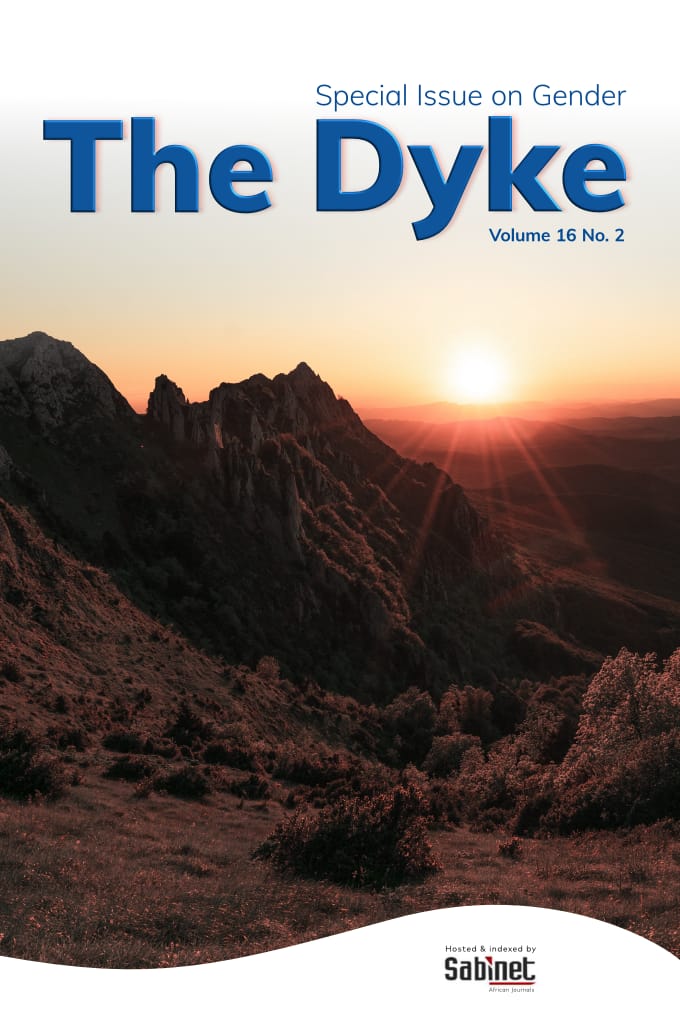Effectiveness of the strategies used by public universities in Zimbabwe to curb sexual harassment of female undergraduate students
DOI:
https://doi.org/10.64754/thedyke.v16i2.188Keywords:
Sexual Harassment, Gender harassment, sexual bribery, coercion.Abstract
This study evaluates the effectiveness of the measures currently in place to curb sexual harassment of female undergraduate students in public universities in Zimbabwe. The study adopted a sequential explanatory research design with the aim of using a mixed research approach. A total of 250 questionnaires were distributed to female students and 40 interviews were conducted with lecturers from three public universities in Zimbabwe. The study revealed that sexual harassment is caused by economic hardships in the country, indecent dressing by female students, intimidation of students by lecturers, and the pressure to earn better grades.
The study revealed the challenges faced by public universities in Zimbabwe in curbing sexual harassment of female undergraduate students are that students do not report most of the cases of sexual harassment, perpetrators are very influential and powerful people in the universities, and lack of financial support for female students. The measures put in place to mitigate sexual harassment is punitive action against the perpetrators of sexual harassment, education of female students on how to handle the incidents of sexual harassment, availability of detained structures to report sexual harassment cases and students have been encouraged to report sexual harassment. The study further highlighted that the measures in place to curb sexual harassment of female undergraduate students in public universities of Zimbabwe are less effective because continuous indecent dressing by female students has normalised sexual harassment as a way of getting better grades. The study recommends that the university authorities should come up with a dress code policy and that the government should avail scholarships for students.
References
Abubakar, A. K. et al. 2010. Sexual assault against female Nigerian students. African Journal of Reproductive Health, 14(3): 189-193.
Adedokun, O. 2005. Sexual harassment in Nigerian Educational Settings: Preliminary note from a qualitative assessment of Lagos State University. Sexuality in African Magazine. 2(4), 1-4.
Akinade, E. A. 2005. Dictionary of guidance and counselling. Counselling Psychology, Ibadan: Olu – Akin Publishers, 171.
Aluede, O. O. 2009. Sexual harassment of women employed in a Nigerian university. Implications for Guidance Counselling, 15(2), 27 – 32.
Ashgar A. Al. M, Farheen B. S. B, Adnan. T, Muzaffar S. M and Ahmad T. S. 2014. Sexual Harassment in Malaysian Educational Institutions: Causes and Solutions. Turkey Proceedings of SocioInt 14-International Conference on Social Sciences and Humanities 484. Istanbul, Turkey.
Bennett, J. 2002. Sexual violence/sexual harassment A handbook of resources. University of Cape Town: African Gender Institute.
Chamberlain L, Crowley M, Tope D and Hodson R. 2008. Sexual Harassment in Organizational Context. Work and Occupations. 35(3), 262-295.
Chukwudi, F. and Gbakorun, A. A. 2011. Indecent dressing and sexual harassment among undergraduates of Nasarawa State University, Keffi. Journal of Sociology, 3(2), pp. 25-31.
Daka, H., Phiri, D., Chipindi, F. M., Nachimwenda, E. 2021. Value of traditional ceremonies in socio-economic development. A case of some selected traditional ceremonies in Zambia. International Journal of Humanities Social Sciences and Education, 8 (2): 134 – 141.
Fitzgerald, L. F, and Shullman, S. L. 1993. “Sexual harassment: A research analysis and agenda for the 1990s” Journal of Vocational Education, 42, 5–27.
Flax, J. 2012. Postmodernism and gender relations in feminist theory. Signs. 12(4): 621-643.
Gouwa. A. 2007. Dealing with sexual harassment at institutions of higher learning: Policy. South African Journal of Higher Education. 21(1), pp.68-84.
Gruber, R. and Hermle, L. C. 2012. Sexual harassment in the workplace. TNT Audio Productions.
Gwirayi, P. 2013. Fighting child sexual abuse: Perspective of pupils from a developing country. London: Sage.
Imonikhe, J., Aluede, V. O. and Idogho, P. 2012. A survey of teachers and students perception of Sexual harassment in tertiary institutions of Edo State Nigeria. Journal of Asian Social Science, 8(1), 268 – 273.
Kanyembe, R. 2018. Normalization of misogyny: Sexist humour in a higher education. (Unpublished Doctorate Thesis), College of Humanities, School of Social Sciences, University of KwaZulu Natal.
Kayuni, M. H. 2009. The challenge of studying sexual harassment in higher education: An experience from the University of Malawi’s Chancellor College, Journal of International Women’s Studies. 11(2), 83-99.
Koi, V. O., Auka, J. and Kilaha, S. 2018. Perceived magnitude of sexual harassment in learning institutions: A case study of Kenya Medical Training College, Nairobi. International Academic Journal of Social Sciences and Education, 2(1), 65-73.
Le Roux, R., Orleyn. T. and Rycroft, A. 2005. Sexual harassment in the workplace law, policies and processes. Cape Town: LexisNexis, Butterworths.
Masvawure, T. 2010. I just need to be flashy on campus: Female students and transactional sex at a university in Zimbabwe. Culture, Health & Sexuality, 857-870.
Mathews, B. 2011. Teacher education to meet the challenges passed by sexual abuse. Australian Journal of Teacher Education, 36 (11):13 – 32.
Moley, L. and Lussier, K. 2009. Sex grades and power gender violence in African higher education. Cambridge Journal of Education, 41(1): 101 – 115.
Muasya, J. N. 2014. Effects of sexual harassment on women students' access to opportunities and facilities: A case study of the University of Nairobi, Kenya. Global Journal of Interdisciplinary Social Sciences, 83-90

Downloads
Published
How to Cite
Issue
Section
License
All articles in The Dyke are published under the Creative Commons Attribution 4.0 International License (CC BY 4.0).
Under this licence:
- Others may copy, redistribute, remix, transform, and build upon the work for any purpose, even commercially.
- Appropriate credit must be given to the original author(s) and source (The Dyke), along with a link to the license.
- Any changes made must be indicated.
Full licence details: https://creativecommons.org/licenses/by/4.0/
Archiving and Preservation
The Dyke supports long-term preservation of scholarly work through partnerships with digital repositories and indexing services, including Sabinet African Journals. Authors are also encouraged to deposit a copy of their published article in institutional or subject-specific repositories.




